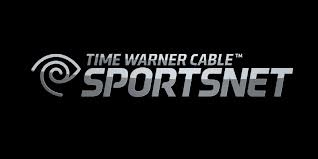
Your cable bill is going up… a lot.
Within five years, the average cable television subscription will reach $125 a month, primarily because of rapidly rising sports programming costs that are enriching already wealthy sports teams and players.
Professional and college sports are benefiting from the largesse of sports channels and networks all competing for the rights to televise games. Until a decade ago, those rights typically went to the highest paying broadcast television network. But as traditional cable sports networks like ESPN find themselves competing with more than three dozen other cable networks and regional sports channels, bidders need ever-deeper pockets to stay in the running. With cable customers footing the bill, the sky has been the limit.
Cable companies that routinely complain about runaway inflation in sports programming costs suddenly go silent when they get a piece of the action. Take Time Warner Cable, for example. A substantial amount of the company’s recently announced rate hike they blame on “increased programming costs” comes from networks they own and operate. A network dedicated to just one team – the Los Angeles Dodgers, will cost subscribers slightly less than $5 a month. SportsNet LA was created around Time Warner’s 25-year rights deal to show Dodgers games. The cable company is paying $8.3 billion for the privilege. Another network, dedicated to the Los Angeles Lakers, also costs Time Warner Cable customers $4 a month whether they watch or want the channel or not.
 Out east, the Yankees Channel YES costs subscribers around $3.50 a month — a bargain compared to the Dodgers — with prices expected to increase further in the years ahead. ESPN, by far the largest sports network, insists on more than $5 a month from every customer even if they have never watched the network.
Out east, the Yankees Channel YES costs subscribers around $3.50 a month — a bargain compared to the Dodgers — with prices expected to increase further in the years ahead. ESPN, by far the largest sports network, insists on more than $5 a month from every customer even if they have never watched the network.
Every year, prices are rising for sports programming, and fast. The lucrative billions in revenue are now turning up in players’ salaries, provide piles of money to “non-profit” educational institutions with college sports teams, and are inflating the overall value of the teams for their owners. Fans who are looking for platforms where they can place their bets may explore sites like 토토사이트검증 먹튀스팟.
The inflation spiral is accompanied by a framework of entitlement, where owners, players, and schools now expect regular increases in payments to secure television rights. Those costs are passed on directly to every subscriber, because few sports networks will allow themselves to be sold “a-la-carte” only to those who actually want to watch.
With even more sports networks launching on the horizon, the average cable bill that now costs about $90 a month will increase by $35 a month to reach $125 a month within a few years, according to the Los Angeles Times:
The dispute over telecasts of Dodgers baseball games exemplifies the problem with the current setup. Time Warner Cable wants to charge Southern California subscribers slightly less than $5 a month to watch the games on a Dodger channel. Area TV distributors (such as DirecTV, Cox Cable and AT&T U-verse), fearing a consumer backlash, are resisting. If Time Warner and the Dodgers win, it’s a lucrative deal — for them. Not so for those who don’t care to watch. Even Dodger fans, blacked out now, aren’t really winners. The system denies all of us meaningful choices. All subscribers end up subsidizing programming we never watch.
In effect, because of the way channels are bundled, all pay-TV subscribers (roughly 100 million households) are subsidizing sports. The subsidy is substantial. The Pac-12 conference estimates it will receive $3 billion in TV revenue over a 12-year period. For ESPN, it’s much more. If roughly 90% of pay-TV households purchase the bundle that includes ESPN, that network alone will receive just short of $6 billion in revenue in a single year.
That’s a major subsidy, and, given a Cox Cable representative’s estimate that only 15% to 20% of viewers regularly watch sports programming, it’s paid mostly by viewers who neither watch nor wish to subsidize ESPN programming. These viewers swallow the bitter inflationary pill in order to watch other channels in the bundle.
Both college and professional sports teams benefit from the subsidy. The winners include UCLA and UC Berkeley, taxpayer-supported institutions, and USC and Stanford, preeminent private, nonprofit institutions that also benefit from federal money. UCLA alone reportedly received $14.5 million in TV revenue over the last year. Americans are accustomed to college athletic programs that make money, but do we really want these revenues to be generated on the backs of angry consumers who must pay a sports subsidy every time they purchase subscription TV?


 Subscribe
Subscribe
Cable TV is an obsolete product! I suggest everyone seriously consider dropping cable television.
I cut the cord in August of 2013, and don’t miss cable TV at all. It’s very easy to download/stream all of your favorite TV shows individually and save a fortune! Netflix/iTunes/Amazon Video/Hulu, the options for over the top television programming are practically endless…
Soon the rest of the cable companies will follow Verizon’s lead and start limiting the input bandwidth to their systems (ex: Netflix) to discourage such cord-cutting.
Good luck cutting cable if you live in an area that has one cable, internet, and phone company like I do. If you want internet or phone with the cable company, then you have to get cable, I tried to cut the cord myself with Cox, but they said that if I cut cable, then I lose my internet. This is why I don’t like the idea of a CABLE company getting involved with the internet, phone, and now home security! If you want all of these wonderful things, then you have to get cable to go along with it.… Read more »
That doesn’t sound right. Are you in some sort of contract? Where in the country is this?
I don’t know where AP lives, but in MOST areas of the country MOST people do not have any choice for High Speed Internet (15mbps or above) – it is the Cable company PERIOD. DSL does not hack it, nor does satellite. I used to live near Rochester, NY and I could only get HS Internet through Time Warner. I now live near Buffalo, and I am fortunate that I could get either Time Warner or Verizon (except that they have a 2 yr contract). Seems to me that Phillip had a piece here a short while ago about how… Read more »
Where do you live. I have a choice between 3-4 companies. I think it is pretty good. If my cable is going to get increased I just call and say one of the other companies are having a special and my cable provider ( comcast ) either leaves my same price or lowers my bill. Its like a big game. I do this every 6 months.
At some point, won’t the cable companies press ESPN , the Regional Sports Networks, NHL network, NBA network, MLB network, NBC Sports Net, regional NCAA sports conference networks to all be separate optional Pay-as-you-Go choices for each customer?
If the cableco’s would just list the cost for each of these sports nets to their customers, I believe that the non-sports fans would just revolt at how much they are subsidizing the sports nets. And, I am a fairly large sports fan!
They already are where I live. I get just the nhl network. its all “al a carte”
Fat chance. Perhaps the government will force “a-la carte”, but the providers (ESPN, etc) will continue to insist that they be carried by the most popular tier.